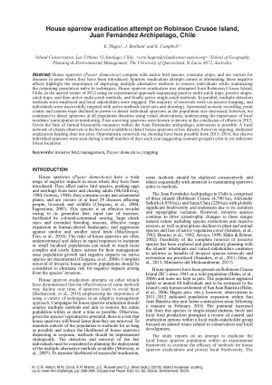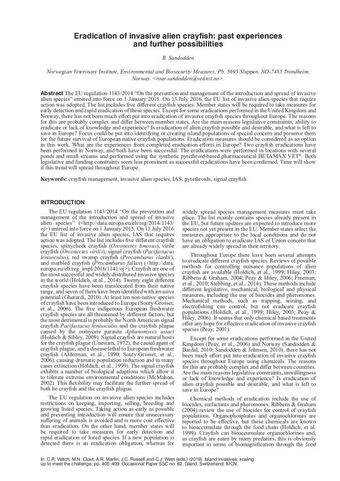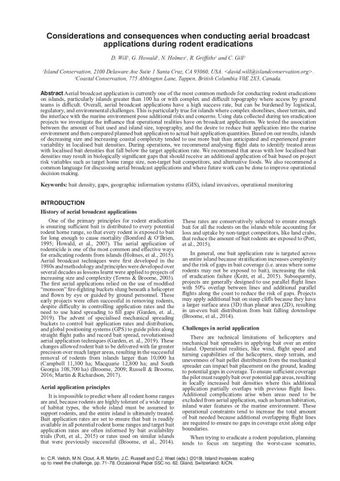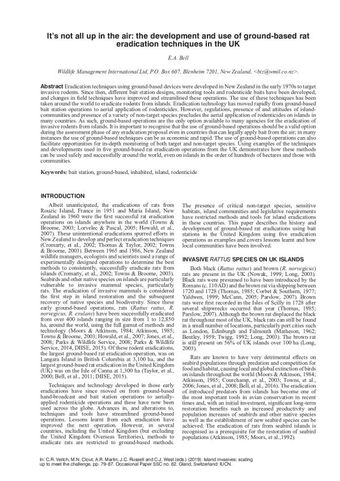House sparrow eradication attempt on Robinson Crusoe Island, Juan Fernández Archipelago, Chile
- Description:
- House sparrows (Passer domesticus) compete with native bird species, consume crops, and are vectors for diseases in areas where they have been introduced. Sparrow eradication attempts aimed at eliminating these negative effects highlight the importance of deploying multiple alternative methods to remove individuals while maintaining the remaining population naïve to techniques. House sparrow eradication was attempted from Robinson Crusoe Island, Chile, in the austral winter of 2012 using an experimental approach sequencing passive multi-catch traps, passive single-catch traps, and then active multi-catch methods, and finally active single-catch methods. In parallel, multiple detection methods were employed and local stakeholders were engaged. The majority of removals were via passive trapping, and individuals were successfully targeted with active methods (mist nets and shooting). Automated acoustic recording, point counts and camera traps declined in power to detect individual sparrows as the population size decreased; however, we continued to detect sparrows at all population densities using visual observations, underscoring the importance of local residents participation in monitoring. Four surviving sparrows were known to persist at the conclusion of eff orts in 2012. Given the lack of formal biosecurity measures within the Juan Fernández archipelago, reinvasion is possible. A local network of citizen observers is the best tool available to detect house sparrows at low density, however ongoing, dedicated eradication funding does not exist. Opportunistic removals via shooting have been possible from 20132016, but elusive individual sparrows were seen during a small number of days each year suggesting remnant group(s) exist in yet unknown forest locations.
- Display date:
- 2019
- Collections:
- Secretariat of the Pacific Regional Environment Programme (SPREP)
- Publisher:
- International Union for Nature Conservation (IUCN)
- Content partner:
- Secretariat of the Pacific Regional Environment Programme (SPREP)
- Availability:
- Not specified
-
Copyright status: All rights reservedFind out more about what you are able to do with this itemThis item is all rights reserved, with means you'll have to get permission from Secretariat of the Pacific Regional Environment Programme (SPREP) before using it. For more information, please see our use and reuse page.What can I do with this item?Non-infringing useNZ copyright law does not prevent every use of a copyright work, and this item may be hosted by an international institute or organisation. You should consider what you can and cannot do with a copyright work.No sharingYou may not copy and/or share this item with others without further permission. This includes posting it on your blog, using it in a presentation, or any other public use.No modifyingYou are not allowed to adapt or remix this item into any other works.No commercial useYou may not use this item commercially.
Related items
Welcome and warm Pasifik greetings
The information on this site has been gathered from our content partners.
The names, terms, and labels that we present on the site may contain images or voices of deceased persons and may also reflect the bias, norms, and perspective of the period of time in which they were created. We accept that these may not be appropriate today.
If you have any concerns or questions about an item, please contact us.



